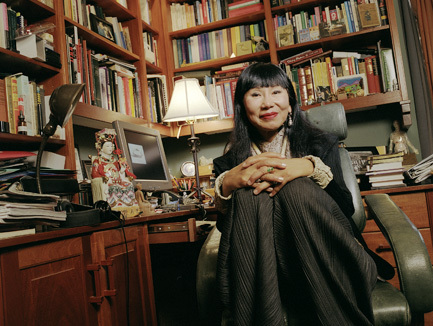In most art museums, the Chinese art section is one
of the fairly larger sections. And Chinese art spans many different kinds of
mediums. Some of the more common types of art are pottery, jade work, painting,
sculpture, and calligraphy.
Paintings and calligraphy go back to the beginning,
and the subject matter and styles vary from dynasty to dynasty. These paintings
can be seen on folding screens, fans, and hanging scrolls. Many scenes depicted
daily life or court life.
Ceramic art and pottery more than likely had its
primary roots in functionality, redefining storing and preparing food and medicines.
The whole invention of pottery is significant because people now had a way to
cook and store food. But it also doubled as art in its design as well as
creating it for the purpose of giving it as a gift. The Chinese also were known
for their lacquer ware as well, which is when you see small boxes or other
items that appear highly glossed.
Silk textiles and jade used for jewelry and
carvings are also commonly found in Chinese art. Most people – including me –
often think of jade as being a green stone, but it can actually range from
reddish to various shades of green to milky white depending on the soil it was
extracted from.
One of the largest and most impressive collections
of sculptures ever found in the world is the famed Terracotta Army. (Terracotta
is a type of earthenware, a clay-based ceramics that is porous when it’s fired.
It can be either glazed or unglazed. I always think of flowerpots when I think
of terracotta.) It was found inside of the tomb of the first Qin emperor –
there were over 7000 life-size statues of soldiers buried. The amazing part is
that each one is unique and different from each other, almost like they were
based on real people.
Painting art among other types of cultural arts
took a hit under Mao’s Cultural Revolution, but it later regained popularity.
Many works of art, including paintings, pottery, and sculptures were destroyed
during these years. The sentiments are a little more relaxed today than it had
been in China’s past, but there is still an aura of censorship surrounding
freedom of expression that remains today.
The earliest of Chinese literature is mostly philosophical
and historical in nature, court documents and religious texts and such. One of
these early books was the I Ching, or
the Book of Changes. It’s more or less and divination manual and based on eight
trigrams. (An example of a trigram are the black lines found on the South
Korean flag.)
Poetry is also a very common form of Chinese
literature. One of the earliest collections is called the Shijing, commonly thought to have been edited by Confucius. The
structure of these poems is in couplets, with four symbols to a line. Each character
is only one syllable. Each dynasty has it’s own styles and variations. I did
have a small laugh, a chortle if you will, that one of the famous poets of the
Song dynasty is Su Shi. Although the Song dynasty did bring about the practice
of “travel prose,” writing about travels and the adventures of the journey; one
example is Su Shi’s “Record of Stone Bell Mountain.” If you were well educated
– probably part of the court and upper class – during the Ming and Qing
dynasties, then classical poetry was a skill that you were expected to learn
and excel at. It was a normal part of society.
There are four novels that are considered part of
the canon of classical Chinese literature: Dream
of the Red Chamber by Cao Xueqin, Water
Margin by Shi Naian, Romance of the
Three Kingdoms by Luo Guanzhong, Journey
to the West by Wu Cheng’en.
During the New Culture Movement was the beginning
of a literary change from the classical language to using more vernacular
speech in writing. Literature in general took a hit during Mao’s Cultural
Revolution years. Any written work that even hinted at humanitarianism or
freedom was immediately quashed. And in many cases, the authors were treated as
dissidents and dealt with in terrible ways. Today there are many Chinese
writers, both in China and as residents abroad. One of my favorite authors is
Chinese-American author Amy Tan. I’ve read her books Joy Luck Club, The Kitchen God’s Wife, and The Hundred Secret Senses, all of which are very good.
In Taoism, the God of Culture and Literature is known
as Wenchang Wang. He’s normally depicted as an elderly man with two attendants:
Tianlong, or Heaven-Deaf; and Diya, or Earth-Mute. He’s the one that students
and writers look to for inspiration and help just before exams.
Up next: music and dance








No comments:
Post a Comment